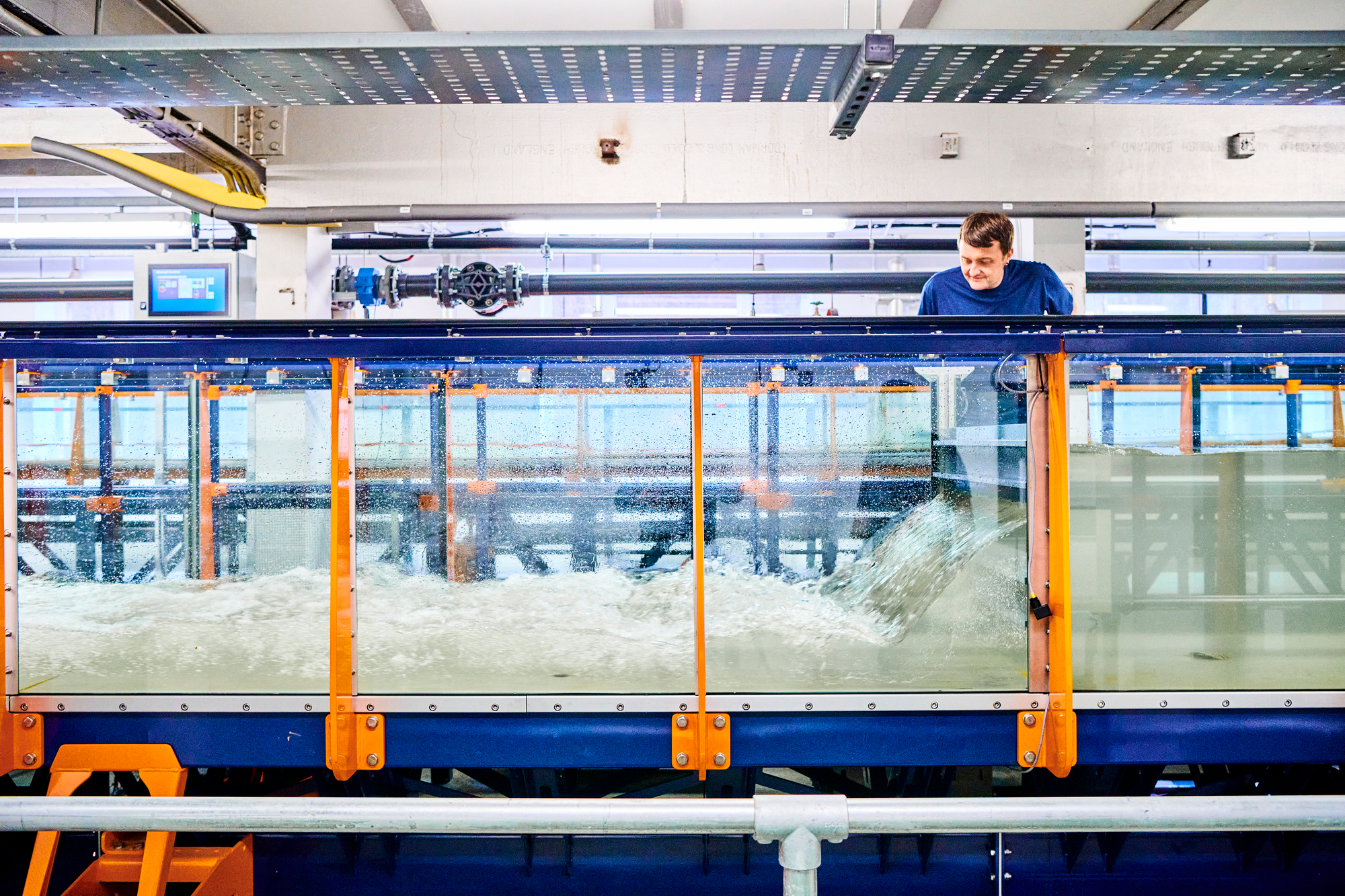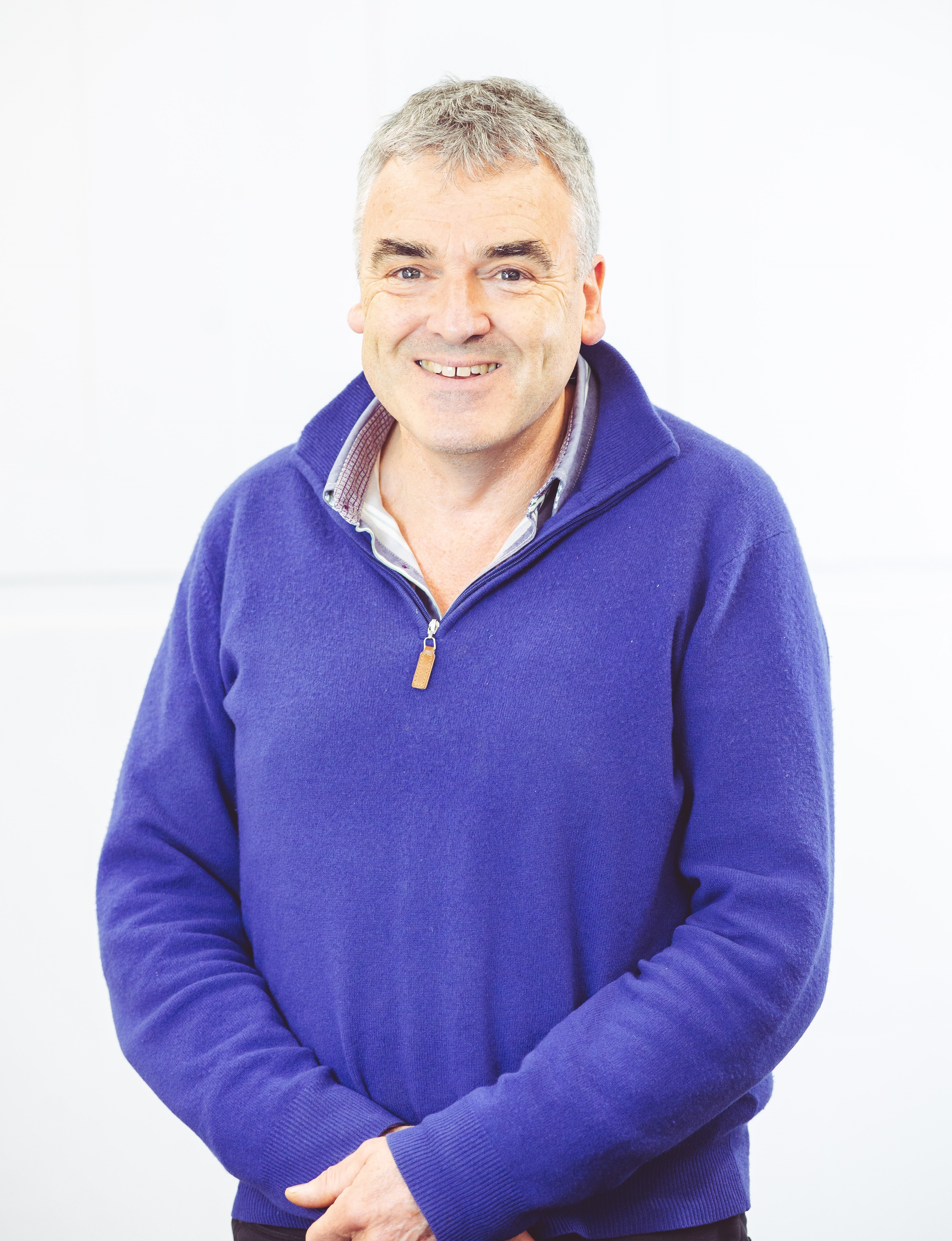Inside the new Stephenson Building: The future of engineering academia
12 January 2023 | By: Newcastle University | 5 min read
The transformation of the Stephenson building is creating a home for visionary engineers to work together and create the technology of tomorrow.
The project captures the building’s 70 years of history and will transform it into the heart of future innovation. From inclusive education spaces to multi-purpose teaching laboratories, the building will offer a world-class experience for academics, researchers and students alike.
We asked our Professor of Electric Power, Barrie Mecrow, to tell us more about the pioneering team behind the development, and how its specialist facilities will nurture talent and spark a new future of engineering.
Hi Barrie. Can you tell us a little bit about yourself and your role within the Stephenson redevelopment?
I’m an engineering academic, specialising in electrical power, who has been with the university since 1987! I am originally from Newcastle and throughout my career I’ve specialised in electrical motors and generators – I was initially drawn into the area by first employer – NEI Parsons, a local company that manufactured very large generators for power stations.
In my time at the university, I’ve had many roles in teaching and research. From 2012–17 I was head of the School of Electrical and Electronic Engineering. In 2017, we merged with other engineering schools to form a single School of Engineering.
Throughout my career I have kept close collaboration with industry, particularly in the aerospace and automotive sectors. I’ve also got a large collaboration with Dyson – three of our ex-students are now directors at Dyson and most of the senior electrical staff there are our alumni.
In 2016 I was also lucky enough to become a Fellow of the Royal Academy of Engineering.
What is the vision behind the redevelopment?
Our vision has the new Stephenson Building at the hub of our School of Engineering. It’ll be buzzing with enthusiasm, ideas and concepts. There, we’ll be conducting world leading research, developing innovative teaching degree programmes, tackling the Industrial Strategy Grand Challenges, and addressing the critical skills shortage in key areas of engineering today.
Our aim is to build the foundations for a world-leading school which positions Newcastle at the centre of engineering academia for the next 25 years and more. We’re going to be the heart of engineering innovation – a place of change and ideas, where the future of the technology will be born.
What features will the new building have to offer academics and researchers?
Our teaching spaces mark a major shift from conventional lecture theatres, in which the students sit passively and listen to the lecturer. We will have two highly innovative collaborative teaching spaces, each of which houses up to 180 students. Within these spaces the students can work together in groups. One of these is circular, with the lecturer based at the centre and able to move between the groups of students.
In addition to these teaching spaces there is also a student makerspace, providing the students with state-of-the-art facilities which they can use for practical design and prototyping. Equipment will range from hand tools up to 3D printers, allowing them to innovate and develop their concepts into working prototypes.
How will the new Stephenson Building compare with other facilities of the same type?
Unlike our other engineering buildings, this building will be very outward facing, welcoming people in and showing the world what we are doing. It is sited right on the corner by the Exhibition Park and is the first major building that visitors to Newcastle will pass by as they arrive off the Central Motorway, creating a gateway into the university.
We don’t want to hide the excellent facilities and work that is going on, so the external walls are mainly glass, showing off our students, teaching laboratories and collaborative spaces. It’s being designed to showcase what we can do to the whole region, and the world.
The centre of the building is dominated by a huge atrium, with lots of social spaces for staff and students alike, creating the wow factor which is needed to match our ambitions.
Can you tell us more about the range of research and innovation facilities being designed for the new building?
I’ve already mentioned our innovative teaching spaces: these sit alongside research facilities, focused on our areas of research excellence. One of the most prominent of these is a new suite of laboratories and offices for our Biomedical Engineering researchers. This brings together specialists from across the engineering disciplines, providing a facility for them to work together in collaboration with our world leading Medical faculty. There are so many ways in which advancements in engineering are going to revolutionise healthcare in the coming years!
Equally exciting, the new Stephenson building will also be home to our research in Fluid Dynamics and Thermal Systems, which will have new, state-of-the-art laboratories. Research in this field will be in collaboration with our researchers in propulsion systems and our leading group on Future Mobility – directly addressing our nations Grand Challenge on Mobility.
Design, Manufacture and Materials is at the heart of engineering and will also be at the heart of research and teaching in the new building, ranging from the use of new materials, through the development of new manufacturing processes and their use in microsensors and systems.
Artificial Intelligence and machine learning forms one of the fastest growing and innovative areas of development in engineering and has rightly been picked as a national Grand Challenge. We are creating a new Artificial Intelligence laboratory, which will be used for both teaching and research. Our leading engineering academics in this field will move into the building. They already work closely with our colleagues in the School of Computing in what is a growing field of activity for both us and the country as a whole.
The new Stephenson is also to be the new home for our Marine, Offshore and Subsea Technology research and teaching. However, whilst it will be home for their offices, they will continue to use their large marine testing facilities in both the Armstrong Building and in our satellite site at Blyth.
What role has academic and researcher feedback had in the redevelopment planning and design?
Right from the outset our development, planning and design has been led by our academics.
We worked closely with the architects to produce the design brief and have continued the process right through to the construction phase. We set up an academic working group which included staff from all the major engineering disciplines and this fed back into the design process as we went along. Each research laboratory and teaching space has been developed in partnership with the academics who will be using it, right down to the placing of individual sockets and taps!
Of course the university is much more than academics and students. Our support staff are key to our success and formed an integral part of the academic working group. Our technicians have been at the heart of development of new workshops and have also had a strong influence upon our teaching laboratories. The building will also be the hub for our professional support staff, and they have designed the layouts for their offices and our student receptions.
How will the building inspire a collaborative ecosystem between academics, researchers, students, and funders?
This topic was uppermost in our thoughts as we developed the design brief. Engineering research and teaching is becoming very much a multidisciplinary activity in which a group of individuals with complementary skills come together, often with others outside of engineering, to drive technology forward. We believe this is most likely to happen when we have large common social spaces and facilities which are visible to all. The closed-off offices and labs of old are going and instead are replaced by glass walls and well-lit facilities which are clustered round a large atrium.
In addition to inspiring collaboration between those staff and students who are in the building, by having glass on the outside, we are seeking to engage with people from the wider community as well!
Engineering is an activity that is all about making things and we work in partnership with industry to ensure that our graduates and our research ideas are of both the highest possible quality and relevant to industrial needs. We aim to offer both research office space and laboratory access to our industrial partners to make the transfer of people and ideas as seamless as possible.
What are your top three new features of the new site for academics and researchers? Why should they be excited?
There is one word which is going to come up a lot here. Collaboration!
- Innovative Teaching Facilities for the collaborative learning of the future
- State-of-the-art research facilities which encourage collaborative research across the disciplines
- A building with a wow factor which reaches out. Most of us are naturally shy, but this building says to the world “Come and look at us and the exciting teaching and research we are doing. Engineering is inspiring, fun and key to our future. Come and collaborate with us!”
Quick Fire QuestionsName: Barrie Mecrow
How long have you worked at Newcastle University? 35 years!
What was your first role in academia? As a lecturer in the Department of Electrical and Electronic Engineering
What is it about electrical power engineering that inspires you? I’m just fascinated about how, using electromagnetics, we can make things move without any physical contact. Translate the concept into modern electric motors and generators and we have the technology that is essential to us solving our climate challenges. |
 |
What is next on your career horizon?
Well, I suppose I’m coming towards the end of my academic career (I’m 62), but I still have a passion about education and research, which will always be with me. I’m keen to continue my industrial and academic research, working with industrial partners and doing my best to enthuse students.
Where do you see yourself in ten years’ time?
Still doing some work – not full-time, but still making a contribution to the university.
You might also like...
- Find out more about Barrie Mecrow, Professor of Electrical Power
- Explore our plans for the Stephenson Building redevelopment
- Discover the things we do at our School of Engineering
- Explore our work as the UK’s largest academic research group in Electrical Power
- Read more about our Electrical and Electrical Engineering research
